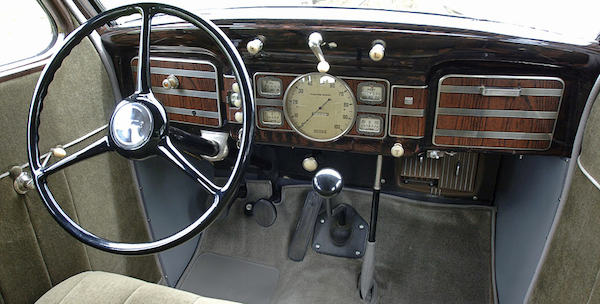I posted about some magnificent prewar Horch's here and here. Marxist ideology required "equality," so Communist bloc countries built very few luxury cars, and only for top leadership use. Therefore, Horch ceased to be a luxury brand, being reduced to something like lower-midlevel Western makes.
This present post presents the Horch (later Sachsenring) P240 produced during the second half of the 1950s. Also shown is the prototype of a luxury model that never saw production.
1938 Horch 930 Limousine
An example of a prewar luxury Horch.
Horch P240 - photo via Autobilder
The Horch P240 was launched in 1955. This is an early model with vertical grille bars. (By the way, Autobilder translates as "car pictures.")
Horch P240 - photo via Autobilder
Styling was slightly awkward, but in line with similar size Western European cars. Included was a curved windshield and wraparound backlight, both probably imported from West Germany. The two-tone paint scheme was in line with current USA fashion. Note the side chrome trim, as something similar will be seen below.
1958c Horch-Sachsenring P240
The design lookes better in monochrome. The restyled grille design seems to have been inspired by ...
1952 Delahaye MS Coupé by Henri Chapron - Bonhams photo
Delahaye was a French luxury brand in its last legs in the early 1950s.
1954 Opel Kapitän
A roughly equivalent West German car was General Motors' Opel Kapitän. This appeared while the P240 was under development.
1956 Opel Kapitän
Here is the Kapitän's 1956 facelift that appeared the model year after the P240 was launched, but perhaps its design was frozen in the spring of 1955 when the P240 was first displayed. Its side chrome trim is not identical to that of the Horch, but quite similar in concept.
1950c Horch 920S prototype
An evolution of the prewar Horch 930S Stromlinie design.
1950c Horch 920S prototype
The tall windows and low hood reduce what otherwise would be considerable visual bulk related to the slab sides.





















































